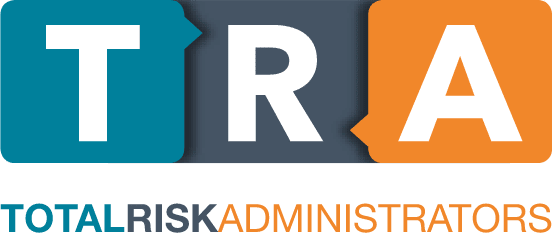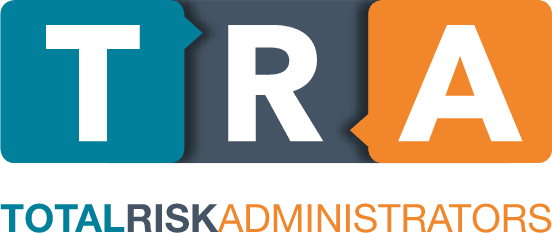You Could Be Missing Out On Thousands of Rands Every Year!
Did you know that SARS provides significant tax relief through medical tax credits that can reduce your regular tax liability by thousands of rands annually?
Understanding how these medical fees tax credits work and how to maximise them is crucial for any professional serious about optimising their tax payable while maintaining quality healthcare coverage.
In this article, we will walk you through everything you need to know about medical tax credits in South Africa, from basic need-to-knows to strategies for maximising your savings – like how these tax savings can be reinvested into additional healthcare protection such as (cough cough) Gap Cover, ensuring you’re fully covered while making the most out of every rand.
Understanding Medical Tax Credits
Tax Credits vs Tax Deductions: What’s the Difference?
A medical tax credit is fundamentally different from a tax deduction. While deductions reduce your taxable income, tax credits directly reduce the actual tax you owe to SARS. These can be reimbursed at the end of each tax year.
The Medical Scheme Fees Tax Credit (MTC) is a rebate which is used to reduce the normal tax a person pays, providing immediate relief for taxpayers contributing to a registered medical scheme.
The Two Types of Medical Tax Credits
The South African tax system provides two different types of medical expenses tax credit:
- Medical Scheme Fees Credit (MTC) – applies to your monthly medical scheme fees
- Additional Medical Expenses Tax Credit (AMTC) – covers certain qualifying medical expenses that your medical scheme doesn’t reimburse
Why the Credit System Exists
This medical scheme fee tax credit aims to achieve greater equity in the treatment of medical expenses across all income groups. The system was introduced because the previous deduction-based approach disproportionately benefited higher-income earners, as their deductions were “worth more” in tax terms.
The credit system ensures that all taxpayers, regardless of taxable income level, receive the same rand value in tax relief.
Who Qualifies for Medical Tax Credits?
The medical scheme fees tax applies to fees paid by a taxpayer to any registered medical scheme for themselves and their dependants. This is for local medical aids registered under the South African Medical Schemes Act through the Council for Medical Schemes.
How Much Can You Really Save?
Current Medical Tax Credit Rates
The financial impact of medical tax credits can be substantial, particularly for families with multiple dependents.
For the most recent tax year (Y/E February 2025), the fixed monthly amounts are:
- R364 per month for the main member
- R728 per month for the taxpayer and one additional dependant
- R246 per month for each additional dependent
Annual Savings by Family Size
Single Professional: R364 monthly = R4,368 annually
Married Couple: R728 monthly = R8,736 annually
Family of Four: R1,220 monthly = R14,640 annually
Medical Tax Savings In Real Life
Consider someone with a taxable income of R450,000 annually. They pay R4,500 monthly for medical scheme contributions covering themselves, their spouse, and their child.
Her medical scheme fees tax credit totals R974 per month (R364 + R364 + R246), reducing her annual tax liability by R11,688. These savings directly impact her take-home income and reduce her monthly PAYE tax deductions.
How Are The Credits Applied?
The beauty of the medical tax credit system lies in its accessibility. Whether you’re a young professional just starting your career or an established executive, the credit value remains constant. This fixed monthly amount provides predictable tax relief that you can factor into your financial planning.
For Employees: Credits are automatically applied to reduce monthly PAYE deductions when medical scheme contributions are deducted by your employer.
For Self-Employed: Those paying medical scheme fees independently claim the credit when submitting their annual tax return, often resulting in substantial refunds.
Additional Medical Expenses Tax Credit (AMTC)
Beyond the standard medical scheme fees tax credit, the additional medical expenses tax credit (AMTC) can provide further tax relief for qualifying medical expenses paid out-of-pocket. Understanding what qualifies can affect your potential savings and reduce your overall tax payable.
What Medical Expenses Qualify?
Duly Registered Medical Practitioners:
- Medical practitioners, dentists, and optometrists
- Homoeopaths, naturopaths, osteopaths, herbalists – only if registered with a recognised South African professional council (like the Allied Health Professions Council of SA – AHPCSA).
- Physiotherapists, chiropractors, orthopaedists
Medical Facilities and Care:
- Hospitalisation in registered hospital facilities
- Home nursing services by registered nurses or nursing assistants
- Services provided by registered nursing agencies
- Fees paid to nursing homes for qualifying care (especially for physical or mental impairment or disability)
Medications and Treatments:
- Prescription medicines dispensed by registered pharmacists
- Medical bills for the treatment of physical impairment or mental impairment conditions
- Medical expenses incurred outside South Africa – only if for services that would qualify in South Africa (e.g., treatment by a licensed doctor or hospital abroad), and proper proof is provided.
What DOESN’T Qualify?
Over-the-Counter Medicines: Items such as cough syrups, headache tablets, or vitamins do not qualify as medical expenses unless they are both prescribed by a registered medical practitioner and dispensed by a pharmacist.
Special Considerations for Different Age Groups
Under 65 (No Disability):
Can claim 25% of the amount by which total qualifying medical expenses and excess medical scheme contributions exceed 7.5% of taxable income
Over 65 OR With Disability:
33.3% of all qualifying expenses and excess medical scheme contributions (no 7.5% threshold applies)
Disability-Related Expenses
These expenses qualify for particularly generous treatment under SARS rules, provided that the taxpayer or a dependant has a recognised disability (as defined by SARS) and a valid ITR-DD form is submitted:
- Personal care attendants
- Specialised transportation
- Prosthetics and assistive devices
- Necessary home or vehicle modifications related to the disability
These can significantly boost your Additional Medical Expenses Tax Credit if you qualify.
Please note: Medical insurance premiums, even if related to disability care, do not qualify for this tax credit.
How To Get The Most Out Of Your Medical Tax Credits
Step 1: Ensure All Dependants Are Registered
The first step involves confirming all eligible dependents are correctly registered on your medical scheme, registered with the Council for Medical Schemes, and reflected in your tax returns.
Who Qualifies as a Dependant:
- Spouses and children
- Parents, grandparents, and other members of your family who rely on you financially
- Unmarried children under 21
- Full-time students under 26 who are financially dependent
- Adult children with disabilities (regardless of age)
Step 2: Keep All Your Receipts & Invoices
Record-keeping is essential in tracking and accounting for additional medical expenses tax credits.
Essential Documents To Track:
- All medical expenses paid receipts
- Medical scheme tax certificate
- Proof of payment for all medical services
- Digital records throughout the tax year
Your medical scheme tax certificate is needed as it shows your annual contributions and validates your claim.
Step 3: Understand the Calculation Thresholds
For taxpayers under 65, the additional medical tax credit (AMTC) for qualifying medical expenses only counts once they exceed 7.5% of taxable income.
For Example, a professional earning R500,000 annually must incur medical expenses exceeding R37,500 before any additional medical tax credit kicks in.
Step 4: Time Your Claims Strategically
Employer-Deducted Contributions: Credits automatically applied to reduce the monthly PAYE tax
Independent Payment: Receive credit as a rebate when filing your annual tax return (can impact cash flow planning)
Step 5: Get Professional Help When Needed
Consider consulting with a tax professional for complex situations involving:
- Disability expenses
- International medical expenses
- Significant out-of-pocket expenses
The additional medical expenses tax credit calculations can become intricate, and professional guidance ensures you claim every available credit while remaining compliant with SARS requirements.
Why Not Use Your Tax Savings To Improve Your Healthcare Cover?
While medical tax credits can provide immediate tax relief, why not consider reinvesting those savings into additional healthcare protection, such as Gap Cover? The thousands of rand saved annually through medical tax credits can help address a significant gap in South African healthcare.
Medical aid schemes typically only pay healthcare providers according to medical scheme tariffs, which often fall short of the actual charges specialists and private hospitals incur. As a result, Members face substantial co-payments and shortfalls – precisely the out-of-pocket expenses that medical tax credits help offset. These medical bills can quickly accumulate, creating unexpected financial strain.
Gap cover medical insurance bridges this shortfall, covering the difference between what your medical scheme pays and what healthcare providers charge.
The monthly premiums for specific gap cover plans often align closely with the tax savings generated by medical tax credits; herein lies an opportunity.
Turning Tax Savings Into Holistic Healthcare Protection
For example, a family of four receiving around R1,200 monthly in medical tax credit savings could invest these funds into gap cover premiums, ensuring they’re protected against unexpected medical bills while effectively maintaining the similar net healthcare costs.
This strategy allows for comprehensive healthcare security and reduces future out-of-pocket expenses.
It’s Doable!
With TRA, individuals can sign up for Gap Cover from as little as R99 per month, and families can sign up from R180 per month. Our most comprehensive policy, Absolute Cover Plus, is R620 a month for both individuals and families.
The TRA Advantage
Total Risk Administrators (TRA) offers comprehensive gap cover solutions designed specifically for South African medical scheme members. TRA understands the intricacies of medical scheme shortfalls and provides cover that seamlessly integrates with your existing medical scheme benefits.
TRA’s Gap Cover Benefits Include, But Are Not Limited To:
- In-hospital and out-of-hospital shortfall protection
- Specialist consultation coverage
- Prescribed minimum benefits coverage
- Travel insurance and TRA Assist benefits
- Streamlined claims process with online submissions
Make The Most Out Of Your Medical Tax Credit & Get Gap Cover Today
By redirecting your medical tax credit savings toward gap cover premiums, you’re not just saving money on the tax you need to pay – you’re investing in holistic, comprehensive healthcare protection that ensures you and your family are fully covered and don’t have to pay out of pocket in the event of a medical emergency.
Sign Up for TRA Gap Cover Today!




